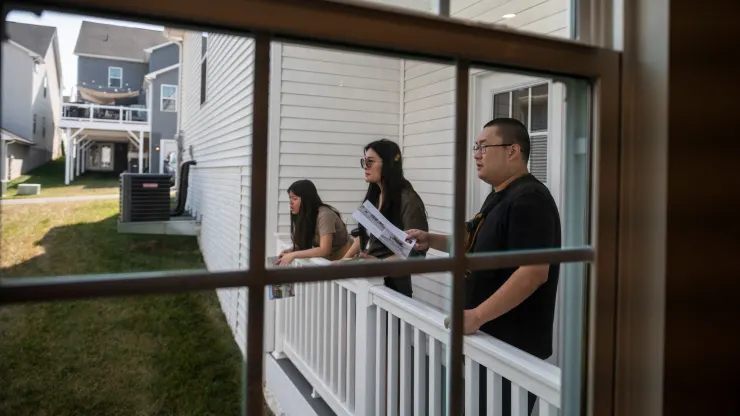In a recent shift, the demand for mortgages has decreased after weeks of steady increase, highlighting buyers’ challenges in an increasingly competitive housing market. The Mortgage Bankers Association’s seasonally adjusted index reveals a 7.2% decline in total mortgage application volume compared to the previous week, signalling a notable change in market dynamics.
The decline in mortgage demand is primarily attributed to potential buyers struggling to find affordable homes in a market characterized by a scant supply. Joel Kan, an economist with the Mortgage Bankers Association, sheds light on the situation, stating, “Low existing housing supply is limiting options for prospective buyers and is keeping home-price growth elevated, resulting in a one-two punch that continues to constrain home purchase activity.” This scarcity of available homes curbs purchase activity and contributes to sustained home-price growth.
Despite the overall downturn in mortgage applications, there was a slight uptick in refinance demand. However, this was not enough to offset the significant 11% drop in purchase applications from the previous week, which also stands 20% lower than last year. The average loan size for purchases has surged to $444,100, marking the highest point since May 2022, further underscoring buyers’ affordability challenges.
The stagnation in the average contract interest rate for 30-year fixed-rate mortgages at 6.78% needs to do more to alleviate these pressures. Additionally, the refinancing segment saw a modest 2% increase in applications, indicating a limited pool of homeowners who stand to benefit from the current rates, notably lower than those recorded in October.
The looming Federal Reserve meeting and the forthcoming monthly employment report add uncertainty to the mortgage landscape. Matthew Graham, COO at Mortgage News Daily, suggests, “If the Fed is to have an impact on mortgage rates [Wednesday], it would only be due to the market’s interpretation of comments about the future.” This anticipation sets the stage for potential volatility in mortgage rates, contingent on economic indicators and Federal Reserve communications.
The dip in mortgage demand underscores the broader challenges in the housing market, from limited inventory to affordability hurdles. As prospective buyers navigate these obstacles, the industry remains attuned to economic signals and policy directions that could shape the trajectory of mortgage rates and market activity in the coming months.







